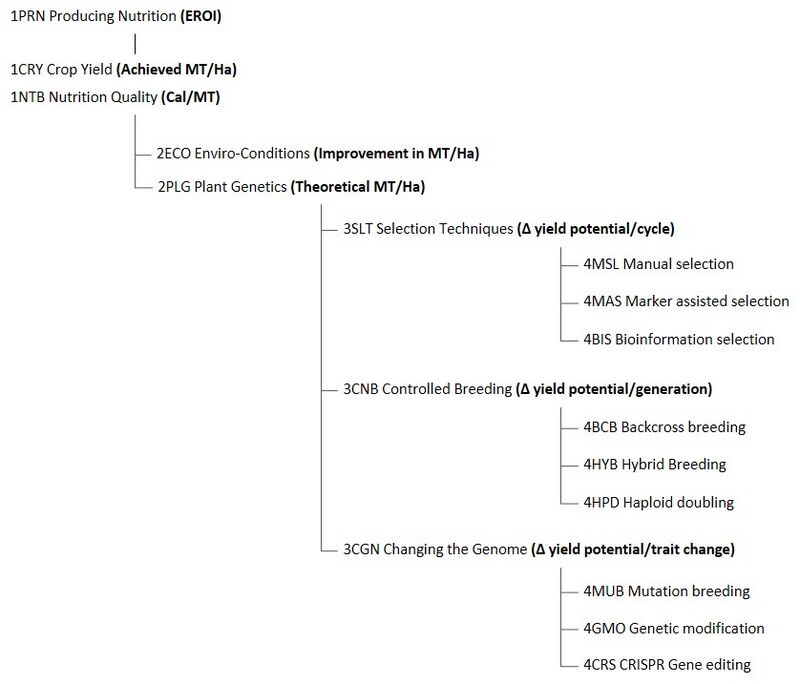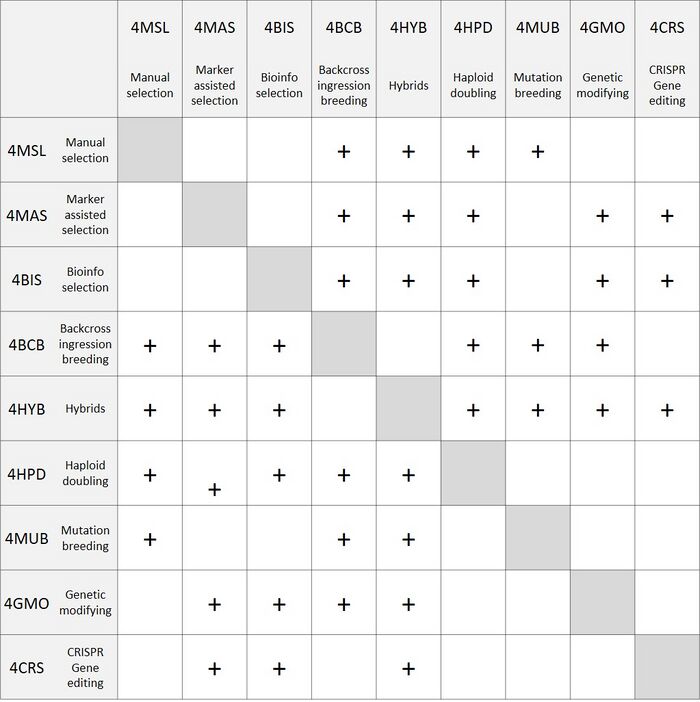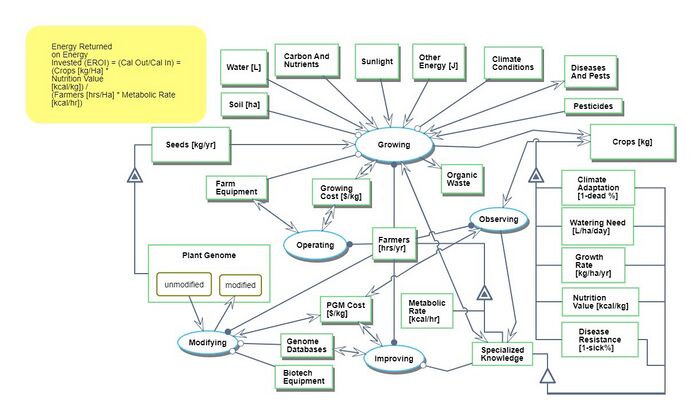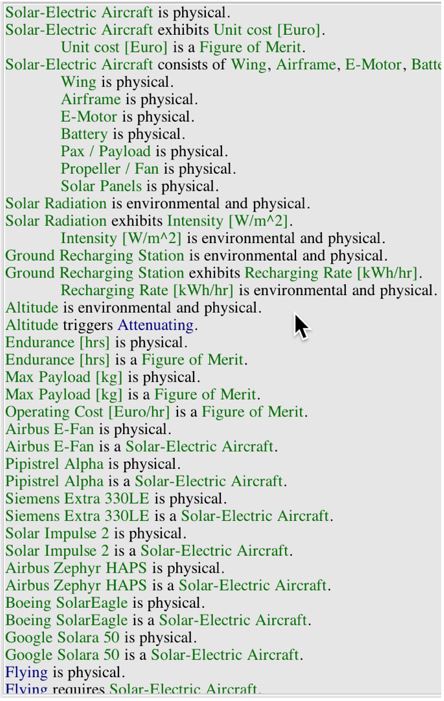Difference between revisions of "Plant Genetic Improvement"
| Line 53: | Line 53: | ||
The table below show a list of FOMs by which plant genetic improvements can be assessed. | The table below show a list of FOMs by which plant genetic improvements can be assessed. | ||
[[File: | [[File:FOM_1.JPG]] | ||
[[File: | [[File:FOM_2.JPG]] | ||
Revision as of 02:15, 8 October 2019
Technology Roadmap Sections and Deliverables
The goal of Plant Genetics Improvement is usually to achieve better outcomes in crop production in the form of more Useful Crop Yield. These improved outcomes can be either increased yield, better quality or improved tolerance. The science of Plant Genetic Improvement has traditionally been the domain of the plant breeder. The technology used for Plant Genetic Improvement consists of both tools and methods as shown below:
Our roadmap is focused on the technologies which contribute to improving 2PLG Plant Genetics and the key Figure of Merit (FOM) is Theoretical MT/Ha.
Roadmap Overview
Plant Breeders contribute to increasing Useful Crop Yield (1CRY) and they do this through the science of improving Plant Genetics (2PLG).
Plant Breeders control a genepool in distinct phases - firstly variation - allowing or encouraging wide variability in the genotype, secondly selection of plants with desirable phenotypes (characteristics). Finally plant breeders then aim to eliminate variability from the gene line of the selected plan, in order to produce a consistent gene line for crop production
In summary, plant breeding is based on these key phases: Create variation → Selection → Eliminate variation and the plant breeder achieves this through the major technologies (both tools and methods) as follows:
- Selection Techniques (3SLT)
- Manual selection (4MLS) a traditional approach which has been carried out for thousands of years.
- Marker assisted selection (4MAS) – a genetic technique where a genetic marker is placed in the genome next to a desirable genetic characteristic which allows desirable plants to be selected before the trait is exhibited in the phenotype. (1986)
- Bioinformatic selection (4DSB) – a bioformatic technique to identify favorable characteristics from the sequenced genetic information of a plant. (2008)
- Controlled Breeding (3CNB)
- Backcross introgression breeding (4BIB) – a breeding technique to move a desirable characteristic from one plant to another line of plants. (1922)
- Hybridization (4HYB) – A natural phenomena where the offspring of purebred parent lines are more healthier than their parents, but themselves sterile. (1926)
- Haploid doubling (4HPD) – a laboratory technique which can create stable parent lines through a laboratory process, rather than seven field seasons of inbreeding. (1959)
- Changing the Genome (3CGN)
- Mutation breeding (4MUB) – a breeding technique which uses primitive methods to force variation in a plant population – for example using exposure to radiation. (1930s)
- Genetic modification (4GMO) – genetic engineering techniques to introduce non-host species genetics into a plant from say a bacteria or different plant species. (1982)
- CRISPR Gene editing (4CRS) – latest genetic technique to be able to cut and paste gene sequences between plants in the laboratory. (2012)
Design Structure Matrix (DSM) Allocation
The DSM is used to show the interaction between tools and methods which make up Plant Genetic Improvement. The + sign indicates that the techniques are compatible and can be used together.
Roadmap Model using OPM
We provide an Object-Process-Diagram (OPD) of the Plant Genetic Improvement roadmap in the figure below. This diagram captures the landscape in which Plant Genetic Improvement belongs and the interfacing systems with which it fits.
An Object-Process-Language (OPL) description of the roadmap scope is auto-generated and given below. It reflects the same content as the previous figure, but in a formal natural language.
Figures of Merit
The table below show a list of FOMs by which plant genetic improvements can be assessed.



